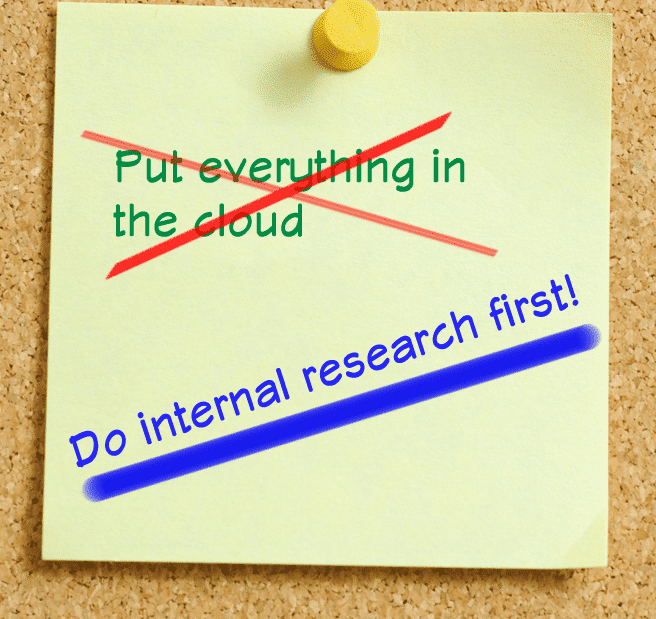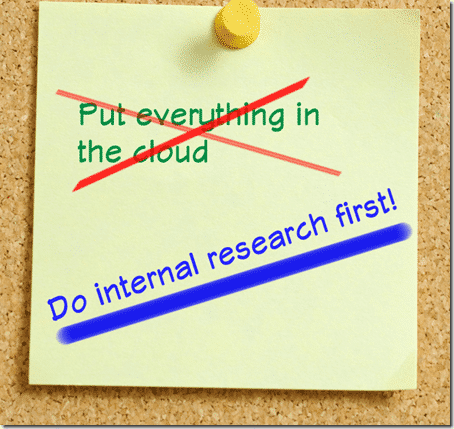I think that perhaps all of this cloud hype is doing businesses a disservice. It’s everywhere. Even people on the street are talking about how their stuff is “in the cloud.” If you aren’t using cloud, you are behind the times and your technology is old and out of date. Cloud will make your teeth whiter, help your kids get into college and will be the next love of your life.
We as consumers and business people are barraged continually about the benefits of cloud computing; after a while we all will cave in. Internal and external pressure will force us to be utilize of some kind of cloud service. And why shouldn’t we? It’s the Fountain of Youth. It gives without end. It scales without thought. It’s really easy to use. And who can refute the numbers? Gartner predicts that worldwide Cloud Services will surpass $109 billion in 2012.
OK, so, let me dial this back a little bit. Personally, I have been evangelizing cloud computing for five years, pretty much when it was just starting to be a potentially viable alternative to traditional IT. During my tenure, I have seen definitions minced, rewritten and marketed. I believe that we finally did come to at least a general definition but each and every day, new forms of cloud services emerge. And it is becoming more confusing. Just last week, I read an article that listed out an abundance of cloud types…IaaS, PaaS, SaaS, BPaaS, private cloud, hybrid cloud, public cloud, virtual private cloud, DBaaS…just insert your product or service before “aaS.” You get the drift? The markets are getting cluttered with services, now with niched definitions. I can only imagine how confusing this must be for a decision maker who is looking to make changes to their existing infrastructure, application or business process.
Here is my recommendation. Don’t just move to the cloud because it is the “hip” thing to do or because all of the cool kids on the block are doing it. Nor should you go first to research all of the types of clouds or cloud services out there. You will simply get more confused. Start with internal focus. Understand your needs and desires. And once you understand your internal needs and goals, then you can proceed.
Here are some tips to provide some focus and a starting point:
- Articulate what you want to achieve – Get your reasoning as to why you want to move to cloud computing down to a paragraph or two. Many of the points below will help you crystalize your reasoning.
- Figure out what currently works and what doesn’t – Conduct a SWOT analysis (Strengths, Weaknesses, Opportunities and Threats) of your existing business. Do it in the traditional grid form. How does your current setup work well? Where can it be improved? How can improvement better your business? What type of impact would diverting resources to a cloud effort affect your existing business processes?
- Conduct some internal interviews – It’s important to get not only opinions from your peers and colleagues, but also their buy-in. Don’t go at a cloud project in a vacuum. Set up your success by understanding what others believe and their experience.
- Find an internal cloud expert – Find someone within your organization who has experience doing cloud computing in a smaller scale. Interview them and find out what worked and what didn’t.
- Form a committee – Get the decision makers, influencers and internal experts together and discuss your ideas, your findings, your concerns and your questions. Use the ideas that you conducted in the SWOT analysis to fine-tune your decision points.
- Do a Post-it note meeting to Blue sky the ideal situation – Do another SWOT analysis where everyone in your committee writes down advantages and disadvantages to moving to the cloud. Have them write it on post-it notes and put on a whiteboard. Discuss each and every point as a group to fully understand and categories these ideas or concerns. Take some time to brainstorm and go through a series of what-if scenarios. Get ideas from all areas of your business departments (e.g., finance, sales, IT, marketing, products, etc.) as everyone will have different objectives and goals.
- Write it all down – Take copious notes. Document ideas and decisions. Revisit your documentation frequently and make modifications based on additional meetings, internal research and interviews.
- Look at what your competitors are doing – Don’t live on an island. Often, it’s important to look at what your competitors are doing well or not so well. In your research, you may find that you can do something better or incur fewer expenses than your competitors if you do it differently than they did.
- Attend conferences, webinars or online research – As you work through your understanding, do take a little time to discover how cloud service solutions are being presented globally.
- Don’t forget about the customer – Lastly, don’t forget your customer. As you work down the decision-making process, see if you can include some core customer opinions and ideas. As users of your own service, understand what would make their businesses better and what they like or what their pain points are.
Having your internal needs, goals and objectives documented will help you get to the next stage, deciding if and what type of cloud service is appropriate to meet your requirements. It is important to understand that there may be solutions that come from different providers (e.g., one for a SaaS-based CRM solution and another for infrastructure as a service). There are some providers that can meet all of your needs but may come with a premium price. Also know that you simply cannot expect what you currently have to work in the cloud. You need to design and architect for the cloud. You may need to leave legacy apps or hardware as is because the effort to incorporate them into a cloud solution might be too large.
It’s critical to think outside of the physical box, away from the bare metal, the wire tangles, the shrink-wrapped software. While the cloud choices can be daunting, the solutions and results you can achieve by utilizing cloud services can be monumental and business-changing. Just make sure that you do your internal investigations diligently before jumping into the clouds.

HTD says: What work do you view is critical before starting a cloud-based project or implementation?




